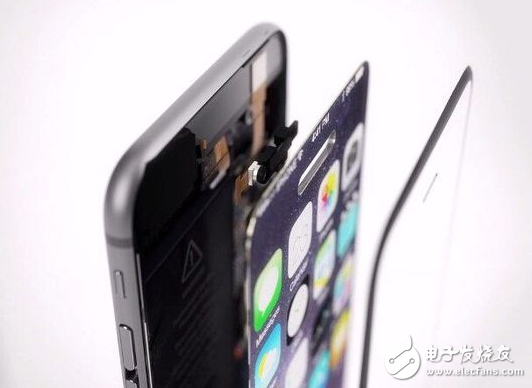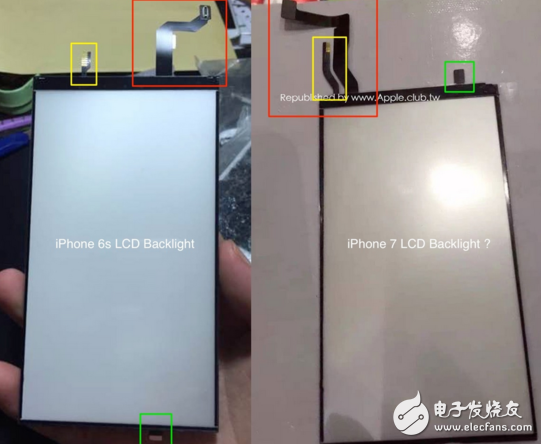Since the middle of last year, there have been many reports claiming that Apple plans to use the screen provided by Japanese JDI on the new generation of iPhone smartphones released this year, specifically referring to the embedded touch of the second generation Pixel Eyes technology. In-cell screen. According to information released by JDI, the first Pixel Eyes2 display panels have been mass-produced at the end of 2015. As for the feature highlights of Pixel Eyes2, the official information provided by JDI said that the second generation of Pixel Eyes technology has greatly improved the contrast ratio compared to the first generation, supporting ultra-narrow "edge to edge" display. The screen frame design, and the thickness of the display Panel is greatly reduced, and the important quality features are also three.
What kind of screen does the iPhone 7 use?
As we all know, Apple has never purchased off-the-shelf display panels. After all, Apple has put a lot of experts in the display field into a professional team for many years. In most cases, it is working closely with display panel manufacturers to jointly develop new iPhones. screen.
Earlier reports said that in order to design the iPhone7 thinner, Apple is considering various possible solutions, and returning to the in-cell touch screen (in-cell) screen is one of the solutions. Taking into account the operation of 3D Touch, the most mature solution of in-cell is the Pixel Eyes screen, which can detect the user's operating pressure on the screen without adding additional components.
In addition, Apple implemented the DCI-P3 color gamut on the iMac. The second-generation PixelEyes technology conforms to the DCI ultra-wide color gamut standard and is more conducive to Apple's full customization, so that the iPhone's gamut range can be unified with multiple product lines. In other words, if it is confirmed that the domestic machine screen mentioned above has reached a fairly good level, then the iPhone 7 will certainly be upgraded to a new height. However, when it comes to this, the problem has come. We know that the JDI screen has been subjected to the outside world because of the problem of the yin and yang screen. If the iPhone 7 uses the JDI screen, will there be a yin and yang screen? Even this JDI screen uses the second generation PixelEyes technology.

Will the yin and yang screen appear on the iPhone 7 screen?
Because I don't know how the second-generation technology and iPhone 7 combination will behave, so let's take it as a topic to discuss. Xiaobian throws bricks and leads jade. Let's start with some inferences. We know that Yinyang screen has been troubled in recent years. The topic of ours, the so-called yin and yang screen, in fact, is that the color of the screen is not evenly displayed. When displaying a pure white background, you can see that a certain block of the screen of the mobile phone is dark and the color is yellow. It can be said that as long as it is not the screen of the OLED (pixels can self-illuminate), the yin and yang screens will appear more or less, and before this, the yellowing of the partial area of ​​the JDI screen is particularly obvious.
In fact, such problems have a lot to do with the design of mobile phones. Generally, for LCD screens that are not self-illuminating, in order to ensure no light leakage, manufacturers need to put baffles on one side of the screen of the mobile phone, most of which are at the bottom of the screen. There is no problem with this design, but in order to satisfy the entertainment experience of most users, the frame of the mobile phone is getting narrower and narrower, and the display brightness is getting higher and higher. Therefore, from the design point of view, once the occlusion is not ideal, It will be obvious that the bottom part of the screen appears dark, and visually it feels yellow.
In addition, the yin and yang screens appear on the screen of the mobile phone, and the bonding technology of the screen also has a certain relationship. Today's screens are generally formed by multi-layered overlays. Although a screen looks very thin, it may have several layers. Each layer has been pressed together by direct hard bonding, but the yield and accuracy are not enough, such as screen bubbles, this process is only suitable for lower-end screens. Therefore, after improvement, most of the screens have been glued together to layer the layer, the term is called "water glue fit".

Although this kind of glue is different from the glue we use every day, from the appearance point of view, they are not much different. Under normal conditions, there will be some yellowing. Therefore, after using it to fit the screen, the manufacturer still needs to go through some procedures. Glue is cured, and UV irradiation is one of the important steps.
However, the irradiation link theoretically has a strict time limit. In order to increase the production capacity, in many cases, the control of the curing time may not be very strict, and there is a certain degree of work difference in the glue bonding. Some screens are prone to solidification.
This has led to many times, even the same material, the same panel technology of the mobile phone screen, the display effect will appear a certain difference, and some screens that are not cured, there will be obvious yin and yang screen. Therefore, after inference, the iPhone 7 also has a chance to appear yin and yang screen, as for the size of the odds, it is still Apple's control of product quality.
How to solve the situation of Yin Yang screen
Having said that, let's talk about the off-topic, that is, if you have a yin and yang screen on your screen, how can you solve it? In theory, if the bezel design of the mobile phone has no serious technical problems, it can still be solved. At present, most of the official solutions are to replace the mobile phone, but even if the mobile phone is replaced, some mobile phones produced in the same batch will still have such problems.

In response to such problems, some netizens have put forward the hypothesis that the mobile phone is irradiated by a professional ultraviolet instrument, or the mobile phone is exposed to sunlight in direct sunlight.
However, in Xiaobian's view, such a method is not very desirable, and there is a greater risk, because the mobile phone is not resistant to high temperatures, and if the mobile phone is exposed to sunlight for too long, there may be a battery explosion. In addition, ultraviolet light is very harmful to electronic products, because ultraviolet light can penetrate electronic components, resulting in electron transfer. If the IC integrated circuit is exposed to ultraviolet rays without any protection, the integrated circuit is prone to damage.
Therefore, it seems that there is only one solution to solve the yin and yang screen, that is, once the serious yin and yang screen of the mobile phone screen is found, it should be sent to the after-sales for replacement until the display effect of the screen can be accepted.
For the mobile phone that is not obvious to the yin and yang screen, or if it is not handled after the sale, you can also try to reduce the brightness of the screen and adjust the angle of the mobile phone to ensure a comfortable one when watching the picture of the white background element. Use the eye environment.
Thin Film Module,Acrylic Wall Panels,Plexiglass Panels,Perspex Panels
zhejiang goldcity technology co,ltd , https://www.membrane-gc.com